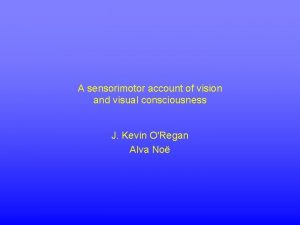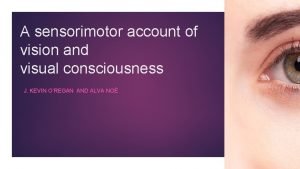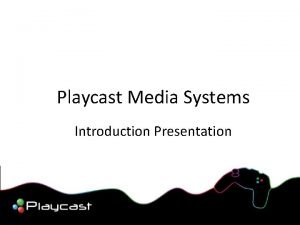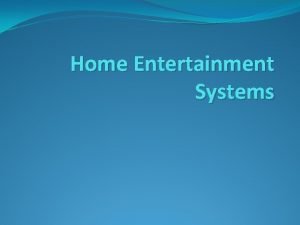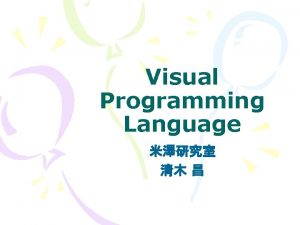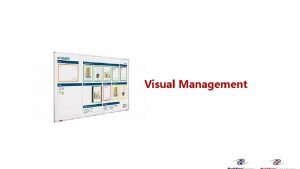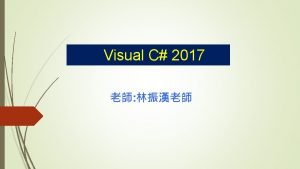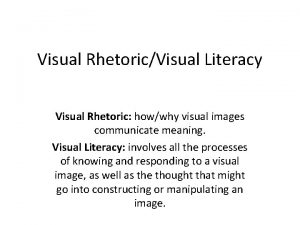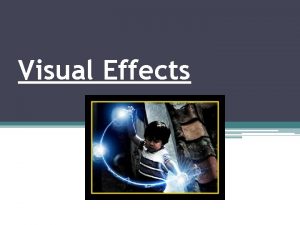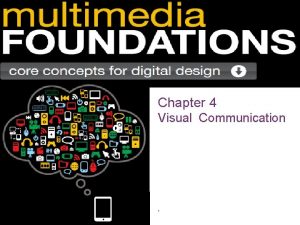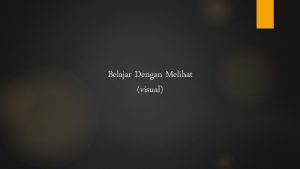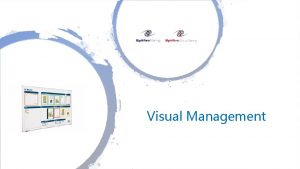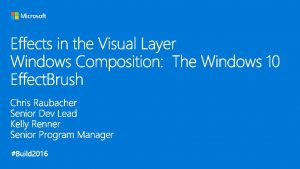C VS CITY Visual Systems Home CITY Vision
















- Slides: 16

C VS CITY Visual Systems Home CITY Vision Screener for Drivers Vision Screening • Overview of the System • The Administrator • Eye Problems • Vision Screening The Questionnaire Explanation of the Tests Results and Report • Administration For help or more information phone 020 8559 0800 Previous © CITY Visual Systems 1989 - 2012 www. cityvisual. com Next 1

C VS Home Overview of Vision Screener Software package to test the vision of Drivers • • Does not replace a full eye examination performed by an optometrist. The Driver still has their legal obligations to the DVLA and Police. It performs a comprehensive test of vision. It does NOT perform a full visual fields test. A Test takes about 4 minutes to complete. Used on Standalone PC’s, Laptops, or via the network. Results stored, analysed and a report generated. Previous © CITY Visual Systems 1989 - 2012 Next 2

C VS Home The Administrator • As an administrator you are not expected to have any knowledge of the eyes or optometric practices, if someone wants this specialist information please refer the request to us. • You are expected to be able to: Set up the computer and position the targets. Calibrate the screen. Measure the test distances. Perform the Drivers Screening correctly and have a knowledge of each test and its instructions. • If you are unsure on the running, instructions, tests etc or if you are failing a large number of drivers (more than one in ten) please contact the support line. Previous © CITY Visual Systems 1989 - 2012 Next 3

C VS Home Eye Problems Do eye problems result from Driving? • Yes, but not necessarily more than similar visual tasks. • Other factors contribute to or may cause ‘eye problems’, these include: Lighting – Dusk/Dawn, Fog, Rain, Snow and Sleet. Posture. Tiredness. Environment. Some types of medication. Existing weakness with vision. • Age is important and symptoms include blurry vision and especially at night with halos and extended recovery time from the effects of dazzle increase with age. • Contact lenses and Multi/Varifocal glasses can cause their own special types of problems. Previous © CITY Visual Systems 1989 - 2012 Next 4

C VS l l l Home Questionnaire The Vision Screener starts with a series of simple questions, over a few screens, gathering information to be used in the programs decision process. Personal information, age, sex, when was the last eye examination; – Driving type – Visual Problems / headaches experienced whilst driving This information is important. Previous © CITY Visual Systems 1989 - 2012 Next 5

C VS Home The Tests The tests are randomised where possible to avoid improvement by ‘learning’ the sequence of letters or position of targets. l Comprehensive range of tests l • • • Amsler Chart to be completed at 50 cms. Visual Acuity to be completed at 1 metre. Optionally there is a Number Search task at 1 metre. Eye Co-ordination to be completed at 1 metre. Peripheral Vision to be completed at 1 metre with wall targets. Distance Acuity to be done at between 3 and 4 metres from the screen. Previous © CITY Visual Systems 1989 - 2012 Next 6

C VS • • Home Amsler Chart This test is done at 50 cms. Suggest that the driver rests his elbows on the table. Checking the central area of vision for blind spots, astigmatism, or other problems with eyes, brain and the visual system. Previous © CITY Visual Systems 1989 - 2012 Next 7

C VS • • • Home Visual Acuity This test is done at 1 metre. Ask the driver to sit back. Helps to determine if the driver can see the dash board clearly. Starts with the smallest detail that can be displayed on the screen. Gap starts at 1 pixel. Broken square is displayed in one of four directions. Size increases when error(s) are made. Each eye is tested, then both eyes. Previous © CITY Visual Systems 1989 - 2012 Next 8

C VS • • Home Eye Co-ordination Use the Red and Green Filter (red to right). Don’t worry if you use them the wrong way round. Measures how well the user can compensate for any muscle imbalances. Linked to symptoms such as double vision and headaches. Tiredness, stress, some drugs or alcohol can make this test more difficult. Some drivers may say that one line is more dim, or not as sharp, or flicking on then off. Please ask them if the lines are approximately straight with each other. Previous © CITY Visual Systems 1989 - 2012 Next 9

C VS • • Home Peripheral Vision This test is beyond the legal requirements, however it is used to demonstrate how well, we can see “out of the corner of the eye”. Place the letter fixation targets on the walls at 60° and 90°on the right and left, using the measuring card supplied. Make sure that you align the letters from the drivers viewing position. When performing the test don’t allow the driver to sit back. If their spectacle frame gets in the way, then this shows that they may be inappropriate, resume testing without them. The answers are Nothing, Shape and Flashing. If they correctly identify the shape then ‘press’ shape. Most people can identify the type of shape at 60°, but only if there is something flashing at 90°. Previous © CITY Visual Systems 1989 - 2012 Next 10

C VS • • • Home Distance Acuity This test compares the measured acuity to the legal requirement. The supervisor must measure a mark a distance from the screen, preferably between 3 and 4 metres, no more than 6 metres. The driver must stand at this mark and attempt to read the letters. Letters are randomised and start with the smallest letters displayed. If glasses are normally worn, the first part tests each eye without the glasses. You should press the 5 Wrong button until they can see the letters. Previous © CITY Visual Systems 1989 - 2012 Next 11

C VS • • • Home Test Results At the end of the tests, the results are automatically saved to disc before being displayed. The Report should be printed at the end of the screening. 2 copies are printed for signing by the driver. One for the driver and the other for your records. Reprints can be made through the Administration (File View and Print Area). Previous © CITY Visual Systems 1989 - 2012 Next 12

C VS Home Reports A copy of this report must be signed and dated by the Driver to be held in the Personnel File. Previous © CITY Visual Systems 1989 - 2012 Next 13

C VS Home Administration · System setup – NOT TO BE USED · Print Forms – NOT TO BE USED. · File View and Print - to look at results of screenings, print reports or export data for management statistics. Previous © CITY Visual Systems 1989 - 2012 Next 14

C VS Home File View and Print Select a record and press View to look at the results and recommendations. l Once the record has been highlighted you can print the User’s Report. Tick User’s Report in the bottom left-hand box. The Print button can then be used. l Previous © CITY Visual Systems 1989 - 2012 Next 15

C VS Home Contact CITY Visual Systems Tel 020 8559 0800 www. cityvisual. com info@cityvisual. com Previous © CITY Visual Systems 1989 - 2012 Next 16
 Structured light
Structured light Arti dari home care
Arti dari home care Perbedaan home care dan home visit
Perbedaan home care dan home visit New mobile home sales oak springs mobile home community
New mobile home sales oak springs mobile home community Plurals of flower
Plurals of flower Come home come home jesus is calling
Come home come home jesus is calling New mobile home sales oak springs mobile home community
New mobile home sales oak springs mobile home community What did you say
What did you say John heartfield
John heartfield She said that, home economics stands for the ideal home.
She said that, home economics stands for the ideal home. Home sweet home survival
Home sweet home survival A sensorimotor account of vision and visual consciousness
A sensorimotor account of vision and visual consciousness Consciousness outside the brain
Consciousness outside the brain City of harare vision and mission
City of harare vision and mission Mac mishmarot
Mac mishmarot Persamaan pemrograman visual dan pemrograman konvensional
Persamaan pemrograman visual dan pemrograman konvensional Distintasec
Distintasec











